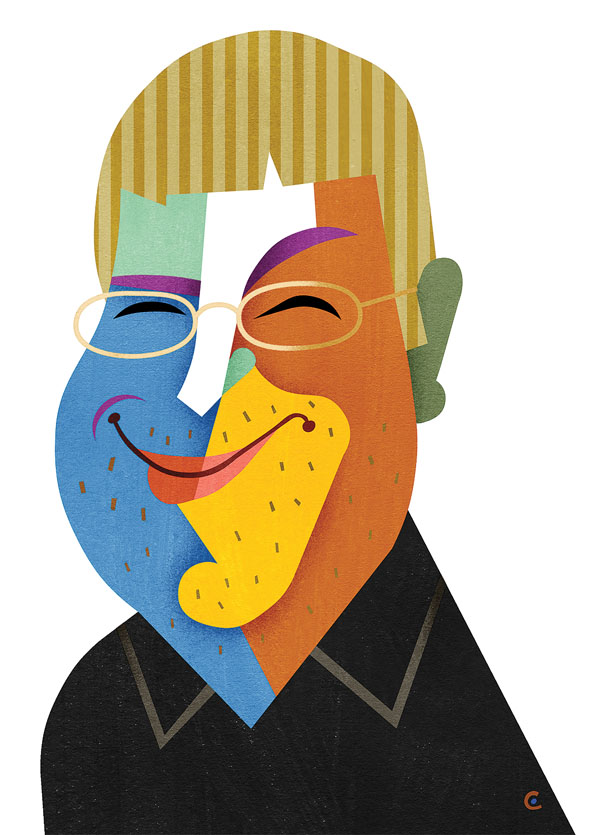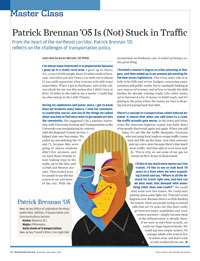Master Class
 (Photo: David Cowles for Rochester Review)
(Photo: David Cowles for Rochester Review)I’ve always been interested in transportation because I grew up in a really rural area. I grew up in Otisco, N.Y., a town of 500 people about 20 miles south of Syracuse. And when you don’t have a car until you’re almost 17, you really appreciate what it means to be able to get somewhere. When I got to Rochester, part of the culture shock for me was this notion that I didn’t have to drive 20 miles to the mall to see a movie. I could hop on a bus and go to the Little Theatre.
During my sophomore and junior years, I got to know Dean [of Students Jody] Asbury. I took her Community Leadership course. And one of the things we talked about was how to find more ways to get people out into the community. She suggested I do a summer internship with University Parking and Transportation as the University was renegotiating its contract with the Regional Transit Service. I helped plan new bus routes. We ended up streamlining the 70 and 72, because they were going to places students didn’t live anymore, and we used those minutes to start making trips to the malls, up to the lake, and to Park and Monroe avenues. That created ways for people to use the bus system to see a lot more of the city. With the moratorium on freshman cars, it ended up being a really great thing.
Patrick Brennan ’05
New Jersey Office of Legislative Services/Authorities, Utilities, Transportation and Communications Section
Home: Delanco, N.J.
Major: Philosophy
Daily mode of transportation: New Jersey Transit’s River Line Light Rail
I finished a master’s degree in urban planning at Rutgers, and then ended up in my present job working for the New Jersey legislature. One of my main roles is to help write bills and review budgets concerning transportation and public works. We’re constantly looking at new sources of revenue, and at how to handle the debt burden for already existing roads. Like other states, we’ve borrowed a lot of money to build roads, and it’s getting to the point where the money we have is all going toward paying back that debt.
There’s a concept in transportation called induced demand. It means that when you add lanes to a road, the traffic actually gets worse. In the 1940s and 1950s, when the interstate highway system was built, that’s what people discovered again and again. When you add lanes, it’s not like the traffic dissipates. Everyone who was using local roads to escape traffic comes back and fills up the lanes. And then someone puts up a new store because there’s that much more traffic. And that adds to even more traffic. This is why we use some of our gas tax money in New Jersey to fund transit.
I’d like to see much more money put into transit. I’d like to see us look back 70 years to a time when we were expanding transit and say, “Where is all the demand for travel right now, and how can we best meet that demand with something other than new roads?” We could start some new bus routes. We could start putting down some light rail. That isn’t what happens now. Because there’s so little funding for transit, there are people trying to extend rails that are 70 years old that don’t really go between major population and work centers anymore—simply because most of the infrastructure is already there. If we were to start from scratch, we could see huge improvements. We could tap into empty nesters. Or younger adults who want to live in urban areas and don’t want to rely exclusively on cars.

